1,575 days, 2,408 entries ...
Newsticker, link list, time machine: HOLO.mg/stream logs emerging trajectories in art, science, technology, and culture––every day
Georgina Voss
Systems Ultra
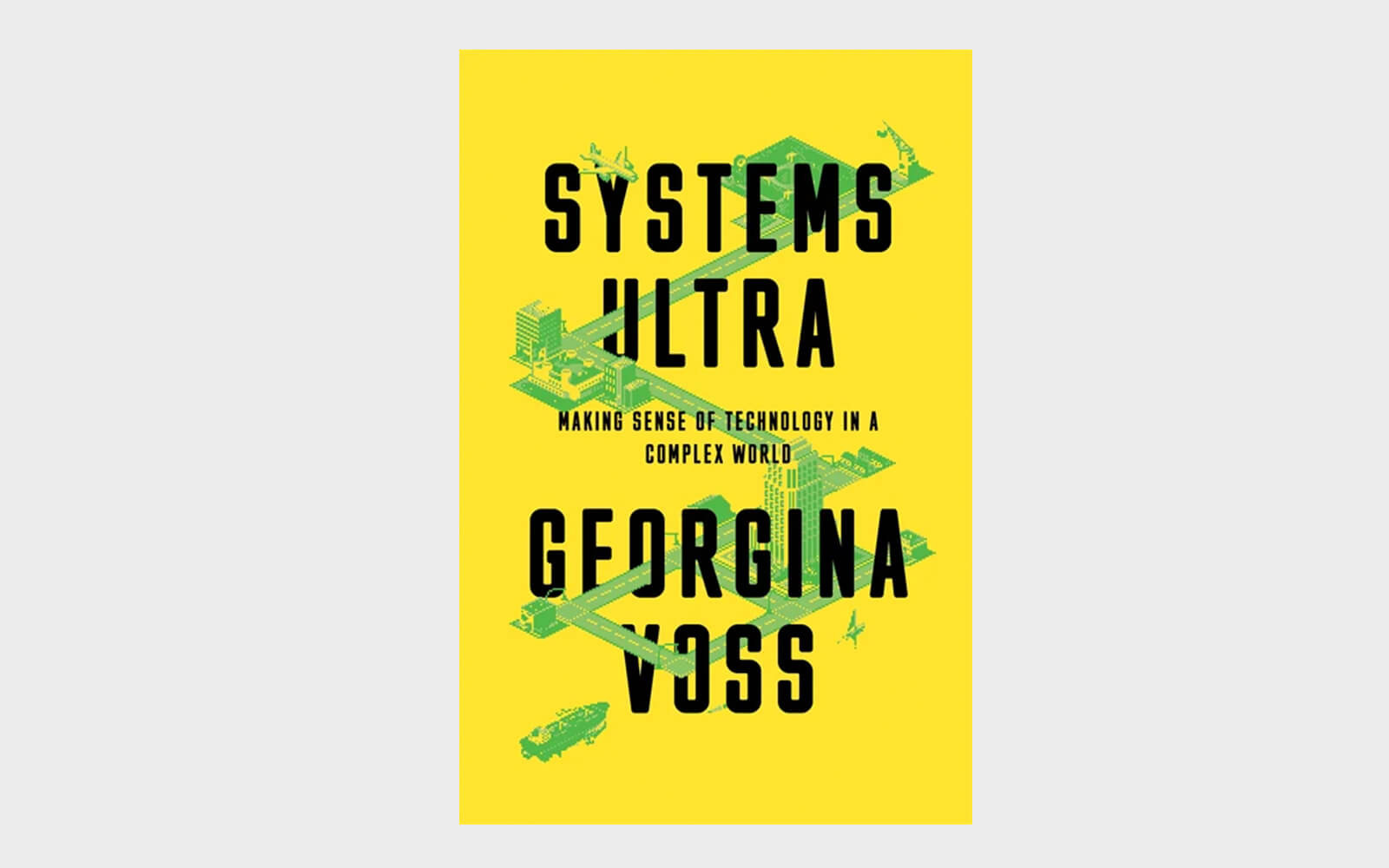
The third edition of Japan’s Osaka Kansai International Art Festival ponders urban futures with a group exhibition that asks “STREET 3.0: Where Is The Street?” Curators Miwa Kutsuna and Yutaro Midorikawa present works by international artists that hack the city with technology (Aram Bartholl, Simon Weckert, AQV-EIKKKM), calligraphy, or olfactory. Bartholl’s over 1,400 node-strong network of Dead Drops (2010-, image), for example, inserts USB flash drives into the urban landscape for offline data sharing.
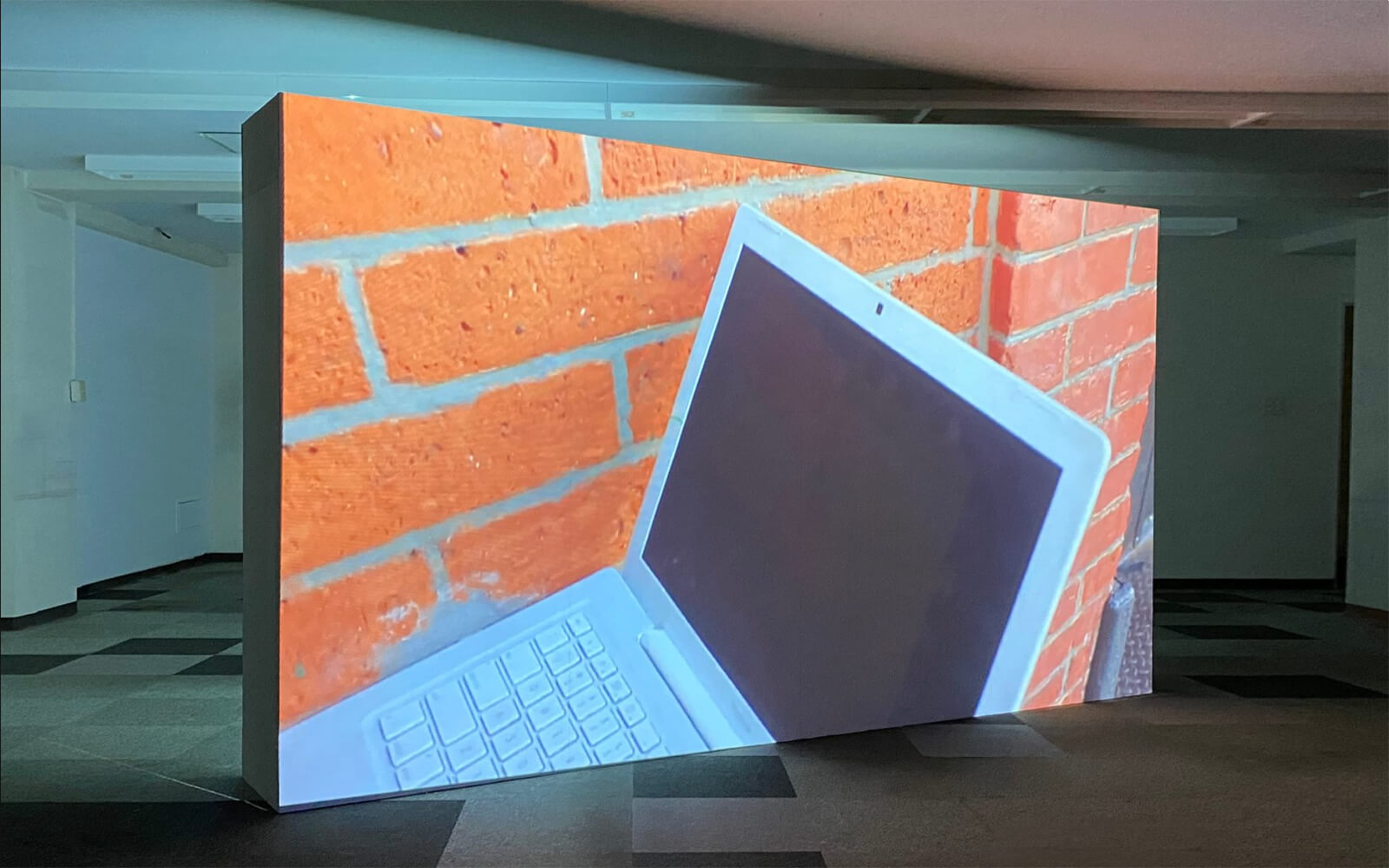
Deb Chachra
How Infrastructure Works
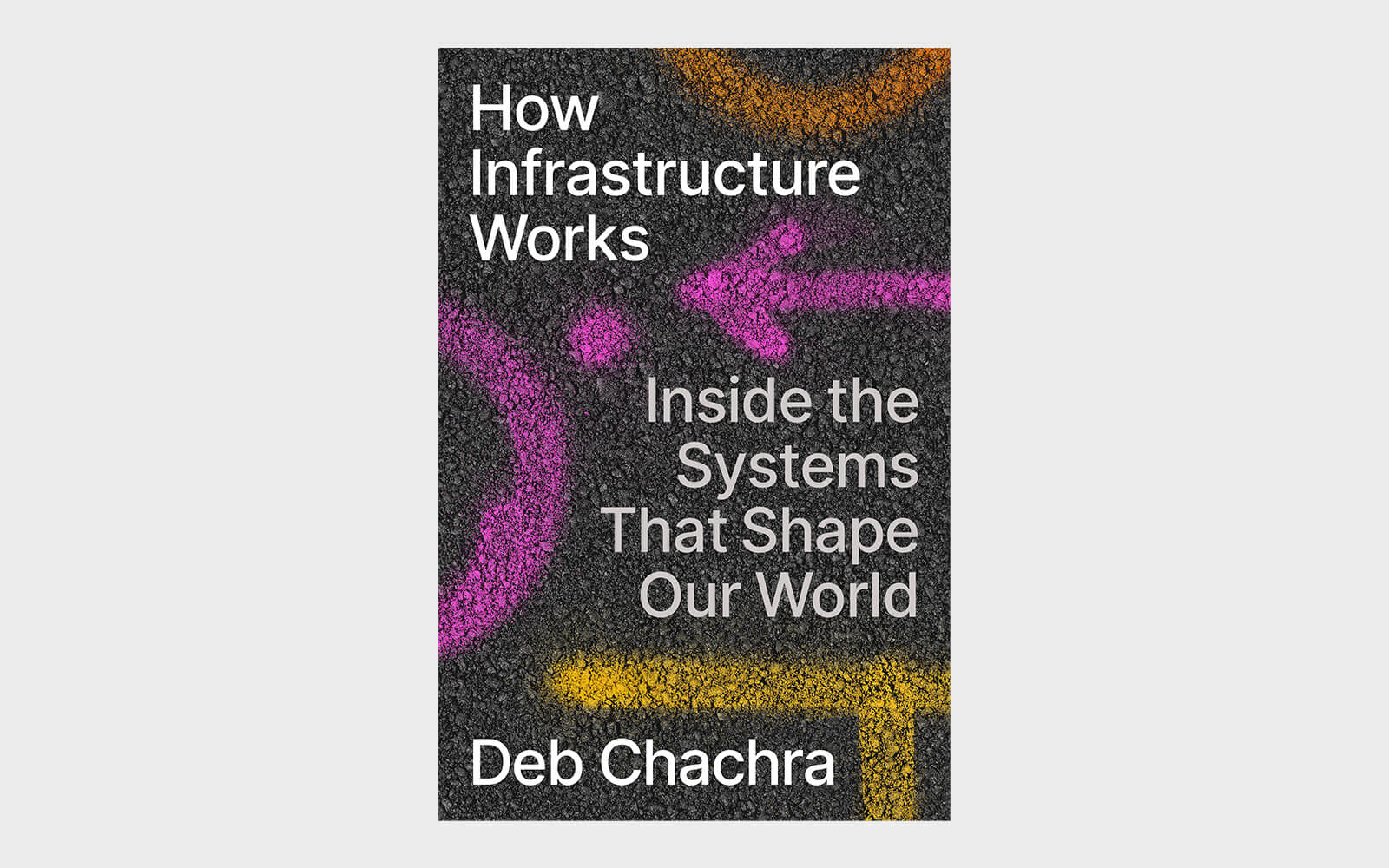
“The structure is so complex and expensive that no single nation would be able to afford them or conceive them, but if we make a decision not to go extinct we need to start building these machines.”
Manifesting how data centres “buzz, hum, and groan around the clock,” 24/7 (2023, image), a new audiovisual installation by composer and visual artist Esmeralda Conde Ruiz opens at HELLERAU in Dresden (DE). Produced during her residency at TU Dresden’s multidisciplinary Schaufler Lab, the installation transforms the HELLERAU orchestra pit into a pseudo-server farm, inviting visitors to explore a noisy labyrinth that foregrounds the sound of ubiquitous data flows.
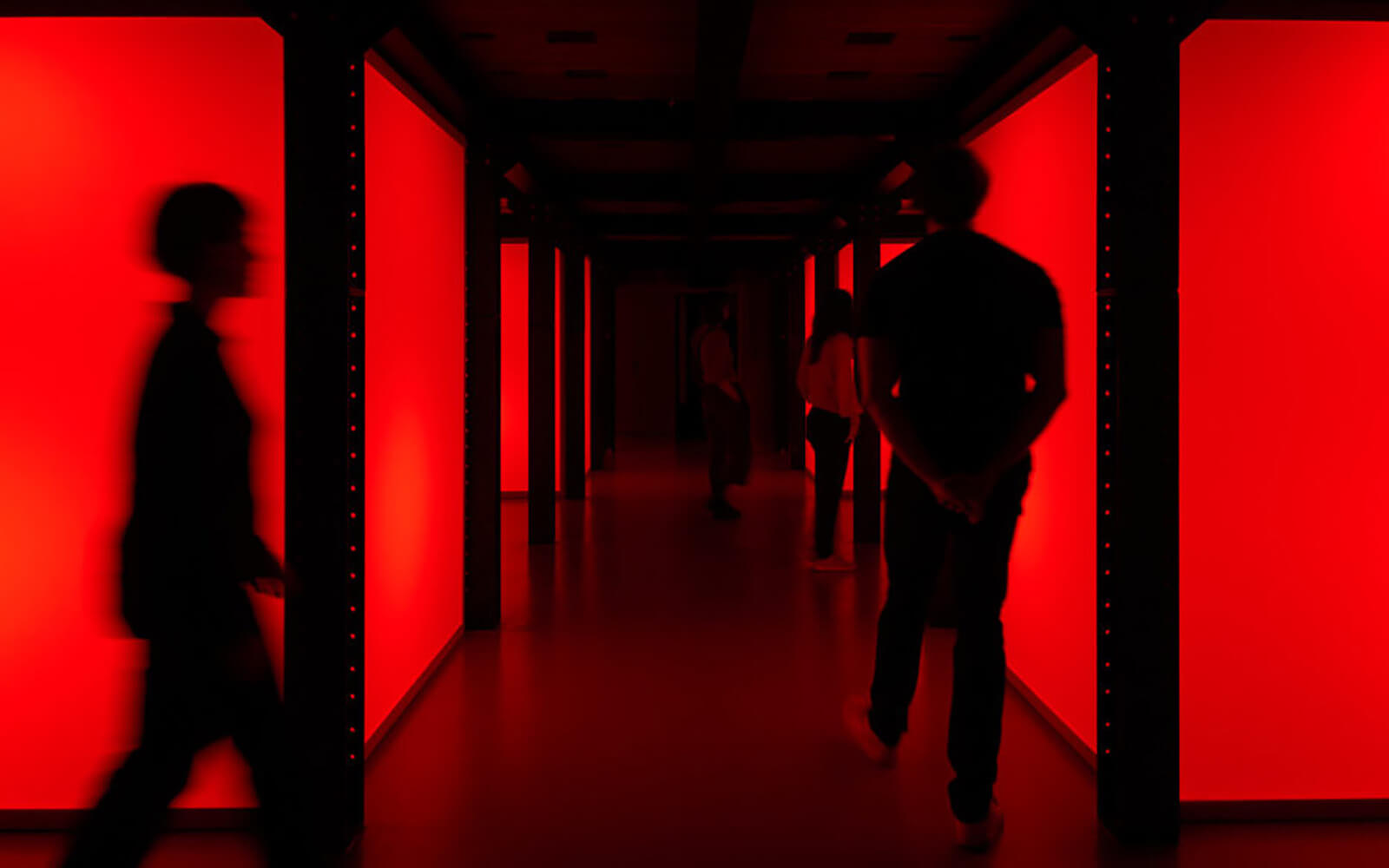
“Terms & Expectations,” a group exhibition curated by Barbara Cueto & Bas Hendrikx, open’s at Toronto’s InterAccess. Focused on “distribution centres as agents within our natural environment,” the show hones in on critical infrastructure that underpins platform capitalism (e.g. the ubiquitous Amazon fulfilment centre). Featured are artists including Hiba Ali Simon Denny, Sophia Oppel, and Coralie Vogelaar, contributing works in mediums ranging from installation to performance.
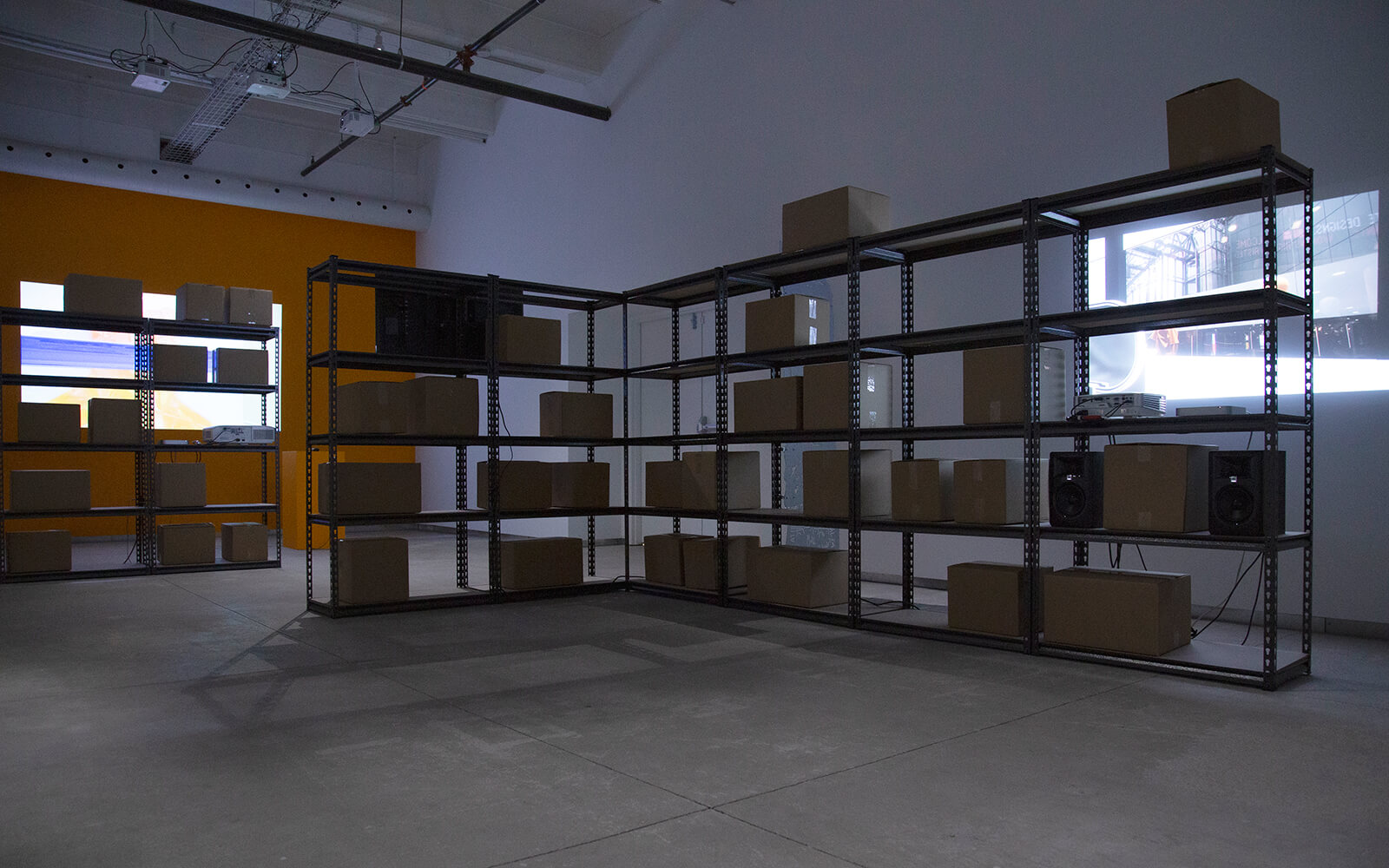
Sarah Friend’s solo exhibition “Terraforming” opens at Nagel Draxler’s Crypto Kiosk, Berlin, with a series of new works that “turn to the protocol layer of blockchains and the physical reality of the internet as subject matter.” Using text, video, code, and waste from a local data center, the Canadian software artist foregrounds “internet infrastructure, its stories, shape, materials” and the false “dichotomy between competition and cooperation.”
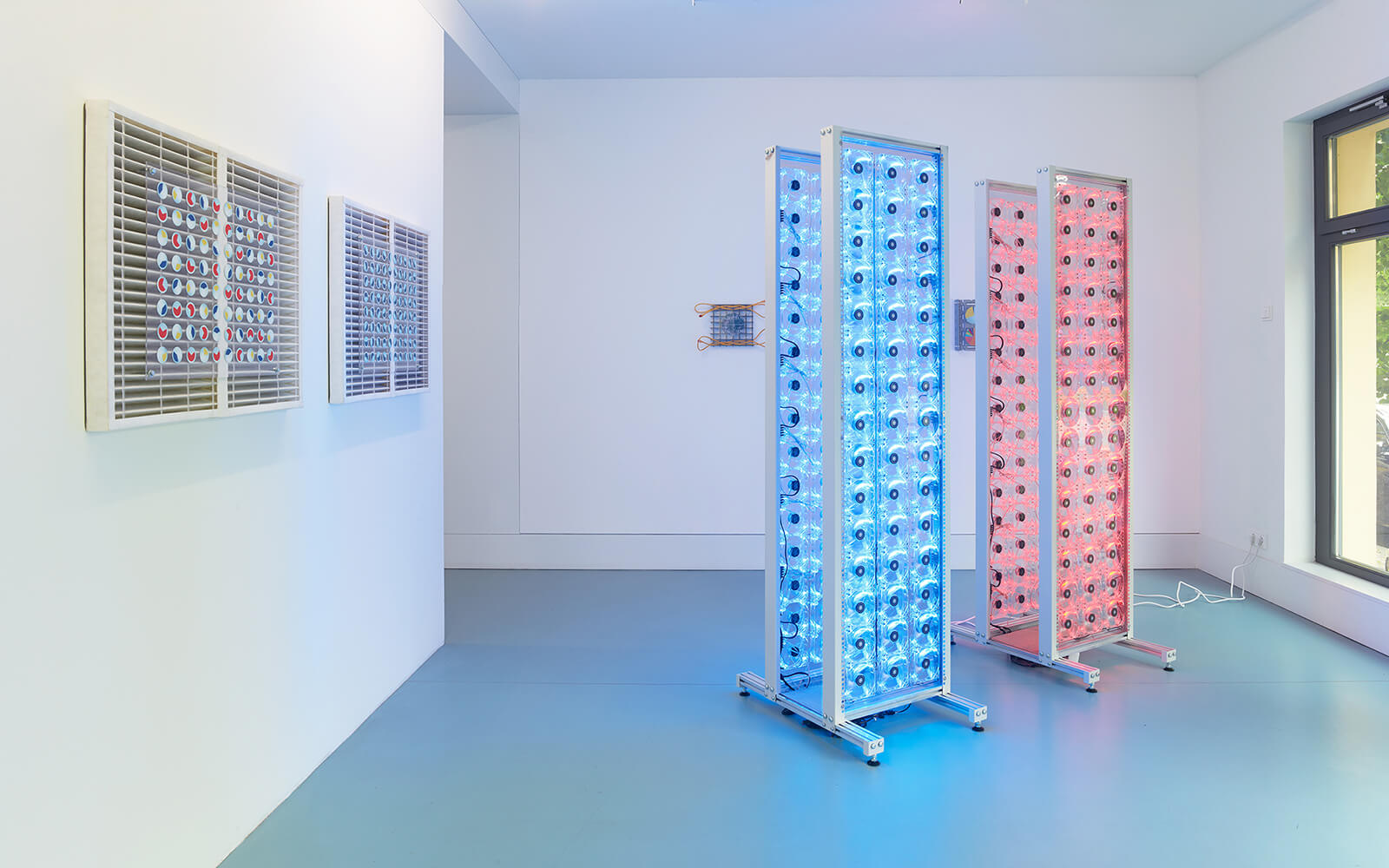
“They took the copper out of it. They actually cut it while it was charging somebody’s car.”
In the CLB Berlin exhibition “Assembly Strategies,” Chilean architect Pedro Serrano explores how JOYN MACHINE might help address local infrastructure needs sustainably. Developed by the research-driven Berlin-based Studio Milz, the portable all-in-one design and assembly system allows for low-cost, low-footprint fabrication of wooden architecture. During the inaugural JOYN residency in 2021, Serrano realized speculative spatial configurations “that have no site or client.”
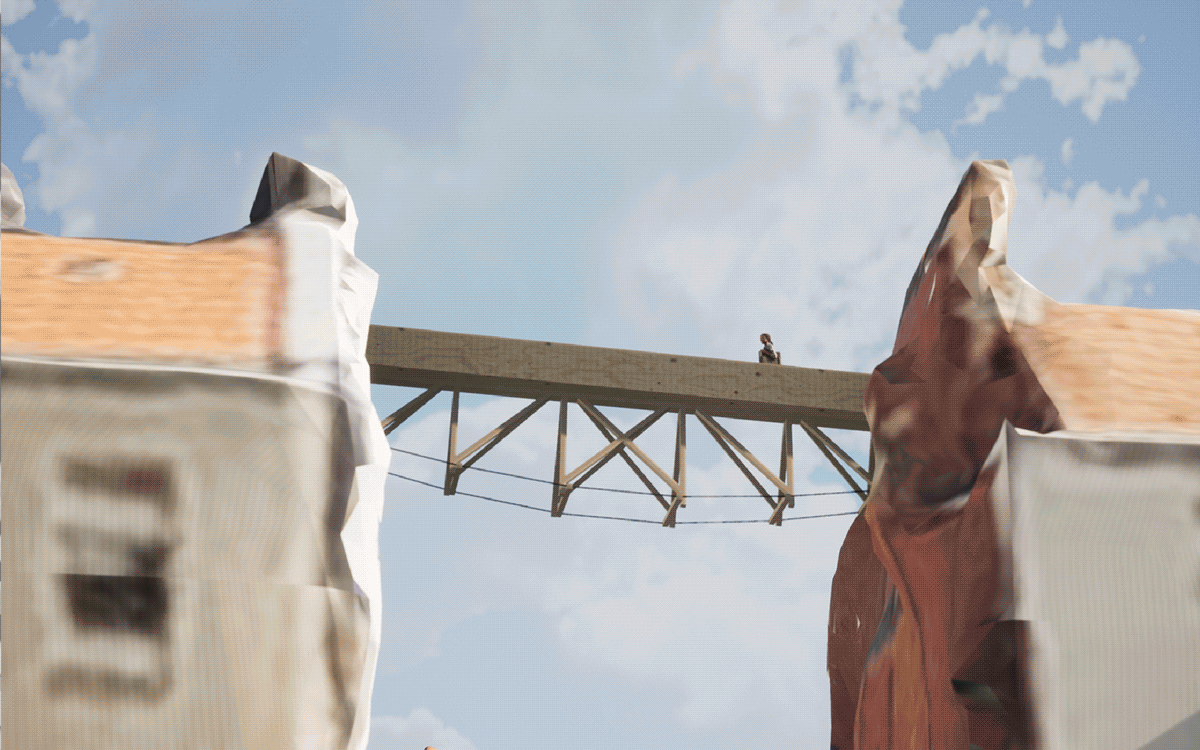
“Transatlantic Visions,” an exhibition showcasing Juliette Lusven’s doctoral research on internet infrastructure, opens at Montréal’s ELEKTRA gallery. Its single installation Sonder (le monde) (2022, image) presents a visualization of the undersea cables that span the Atlantic Ocean and real-time geographic data, fusing topographic and satellite views with “microscopic captures of technological residues, sediments, and microfossils from the ocean floor.”
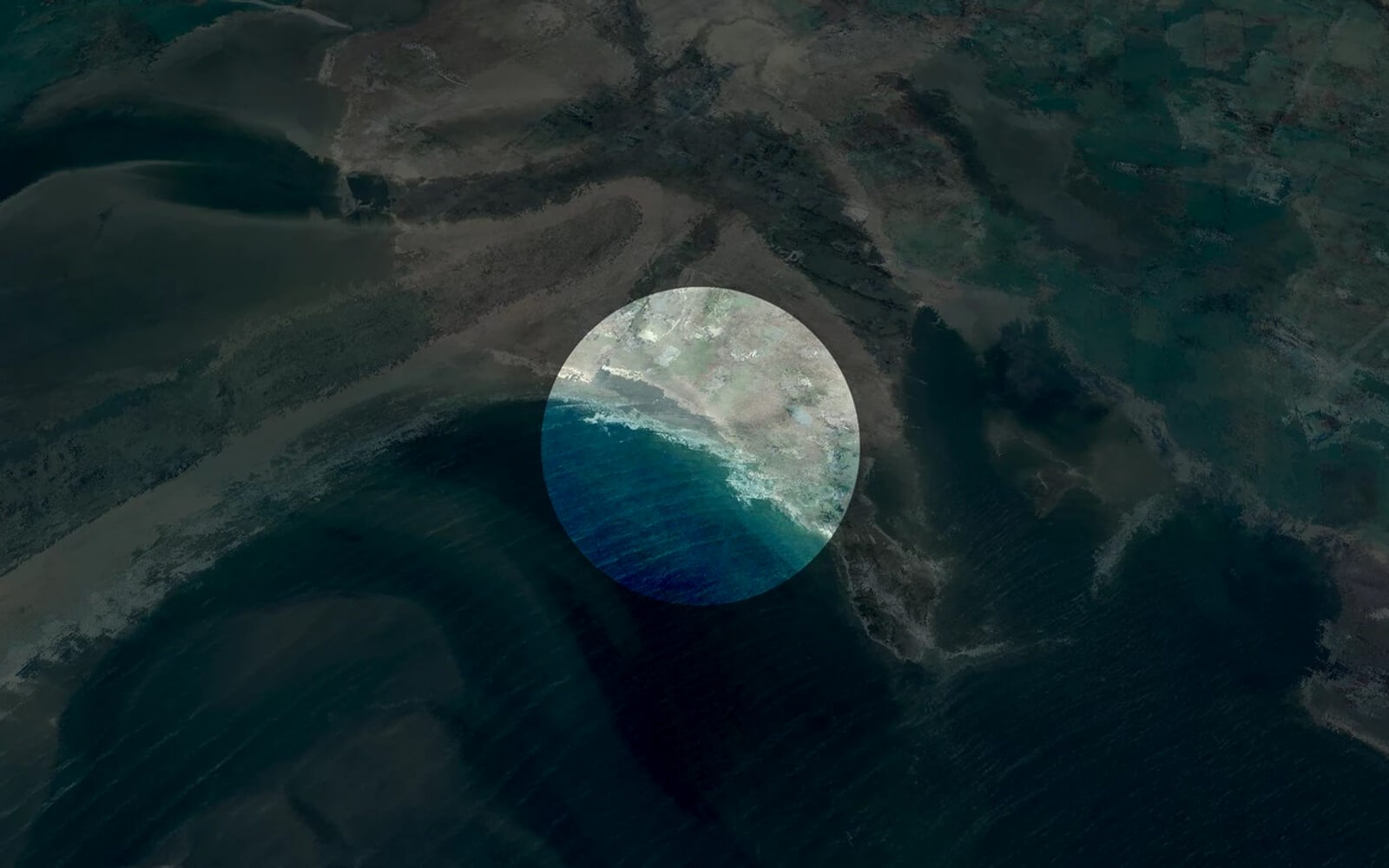
What comes after platform capitalism? An assemblage called ‘hyperstructures,’ according to Jacob Horne. In an essay published on his website, the co-founder of the NFT marketplace aggregator Zora outlines the frameworks he sees emerging around crypto protocols. Inspired by the utopian architecture of Paolo Soleri, Horne argues the permissionless nature of hyperstructures generates low-friction exchange, yielding more equitable outcomes for participants (versus web 2.0 platforms where the user is the product). Is this the frothy rhetoric we’ll hear as money flows into web3? Yes, but Zora’s manifesto claim that “platforms hold our audiences and content hostage” is not wrong.
With Pink Cell Tower, artist and critical engineer Julian Oliver erects “Germany’s first cell tower for the Commons” at Skulpturenpark Berlin. The solar-powered and autonomous piece of ‘extroverted infrastructure’—it’s designed to be seen—is framed by Oliver as an act of reclamation in an otherwise completely privatised EM space. “Calls and texts across the network are free and pro-public,” the former Berlin resident writes on Twitter. In short: “No plans, no tracking, no monitoring.”
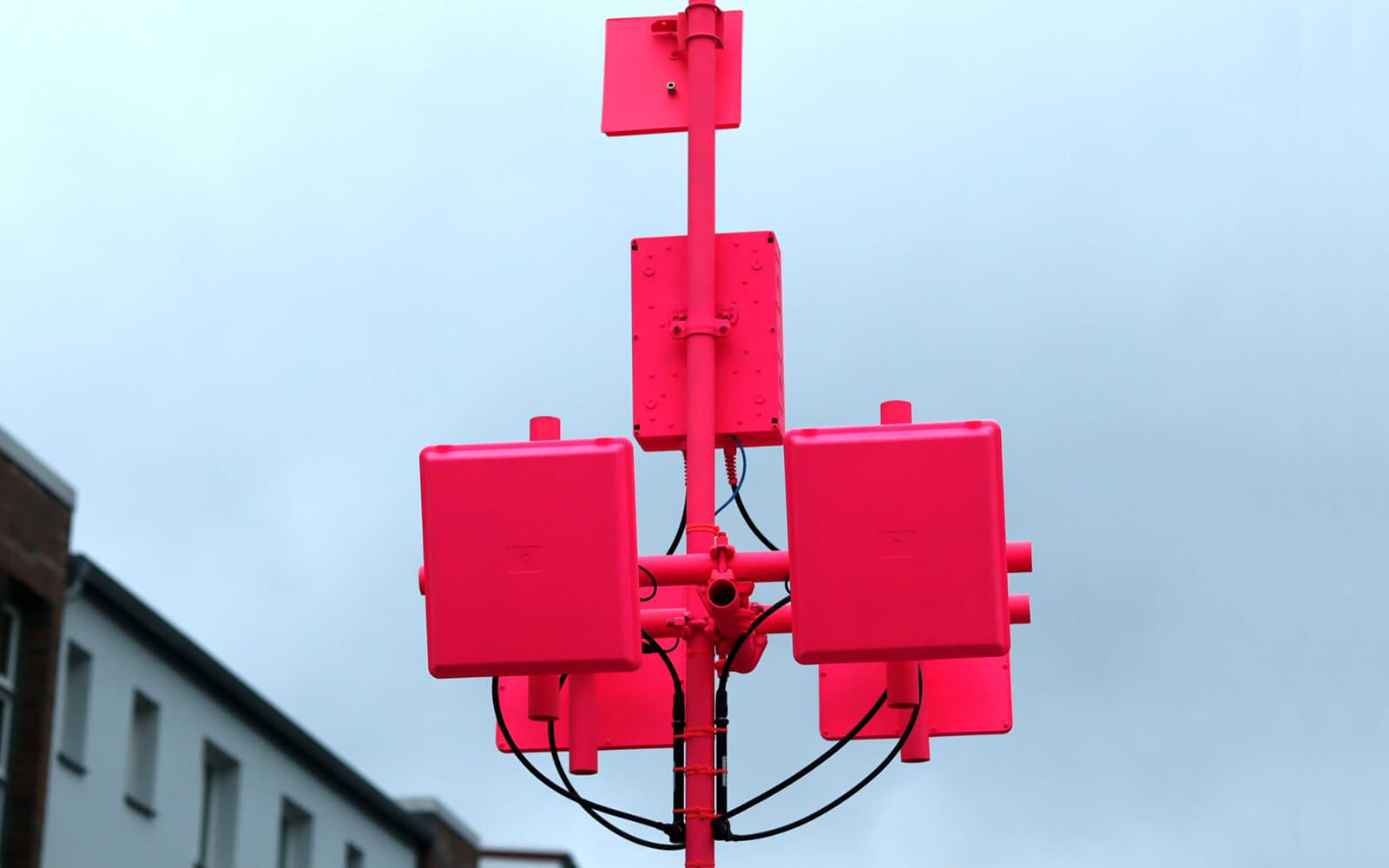
DING #4
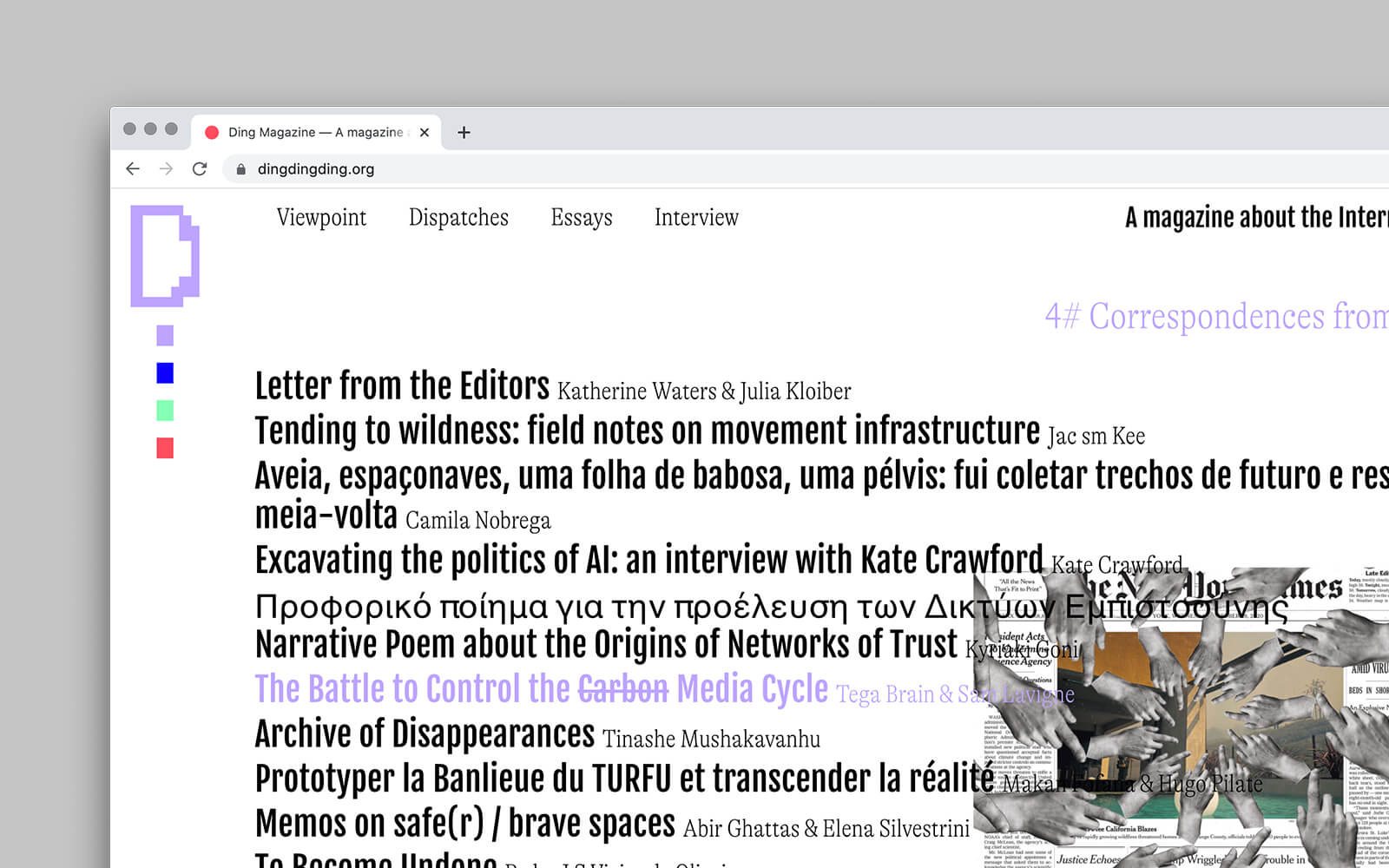
“We were thinking about infrastructure, specifically: the railroad as one of the past, and the possible implications of augmented reality as another in the future.”
“Everything—capitalism, the economy, politics, the internet, supply chains—has become a terrifying, complicated mess that we can’t understand. But we can understand a ship blocking a canal.”
“Louder for everyone in the back: a Chinese rail system was completely halted after Adobe finally ceased all Flash support which is to say that there is a railroad out there RUNNING ON FLASH.”
“Like all technologies, light reflects larger expressions of power, carving up an architecture of visibility that shapes how lives are led at night, providing shelter for some and harmful exposure for others.”
Daily discoveries at the nexus of art, science, technology, and culture: Get full access by becoming a HOLO Reader!
- Perspective: research, long-form analysis, and critical commentary
- Encounters: in-depth artist profiles and studio visits of pioneers and key innovators
- Stream: a timeline and news archive with 1,200+ entries and counting
- Edition: HOLO’s annual collector’s edition that captures the calendar year in print
